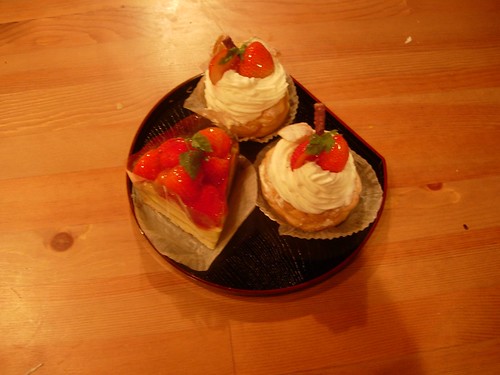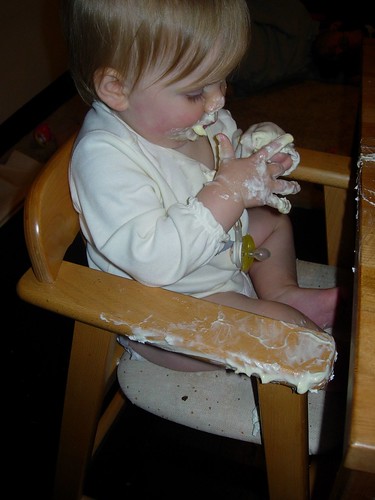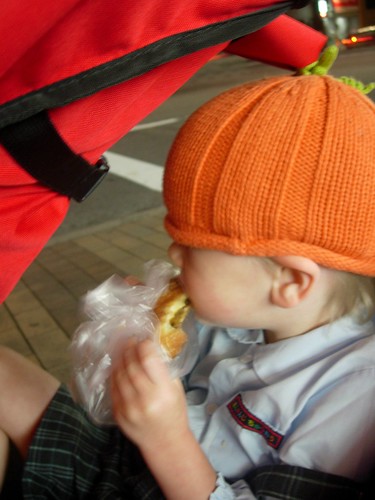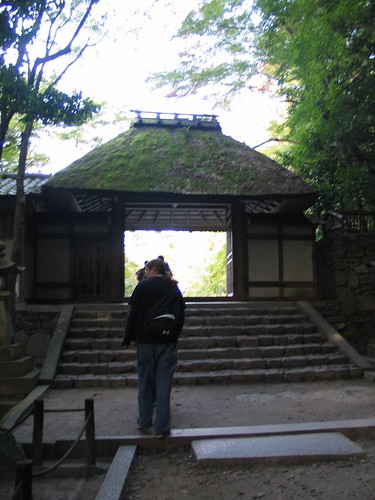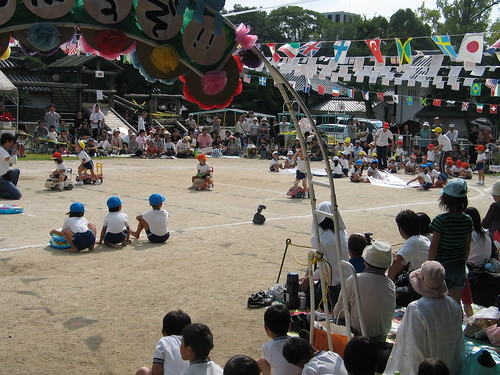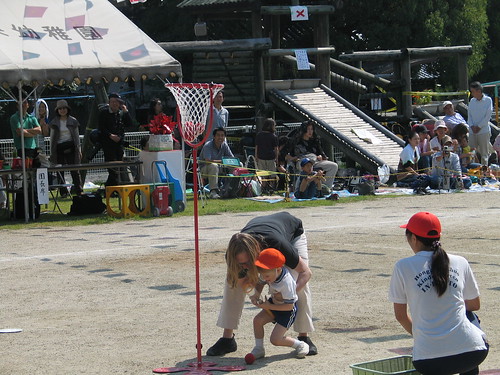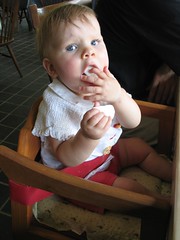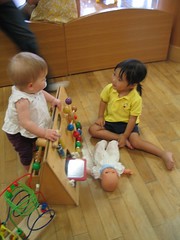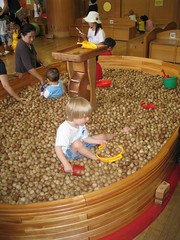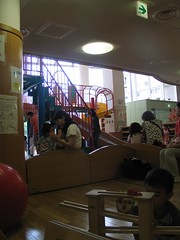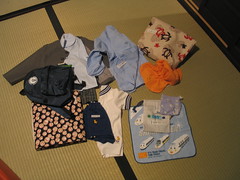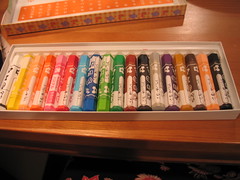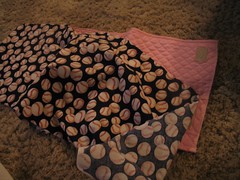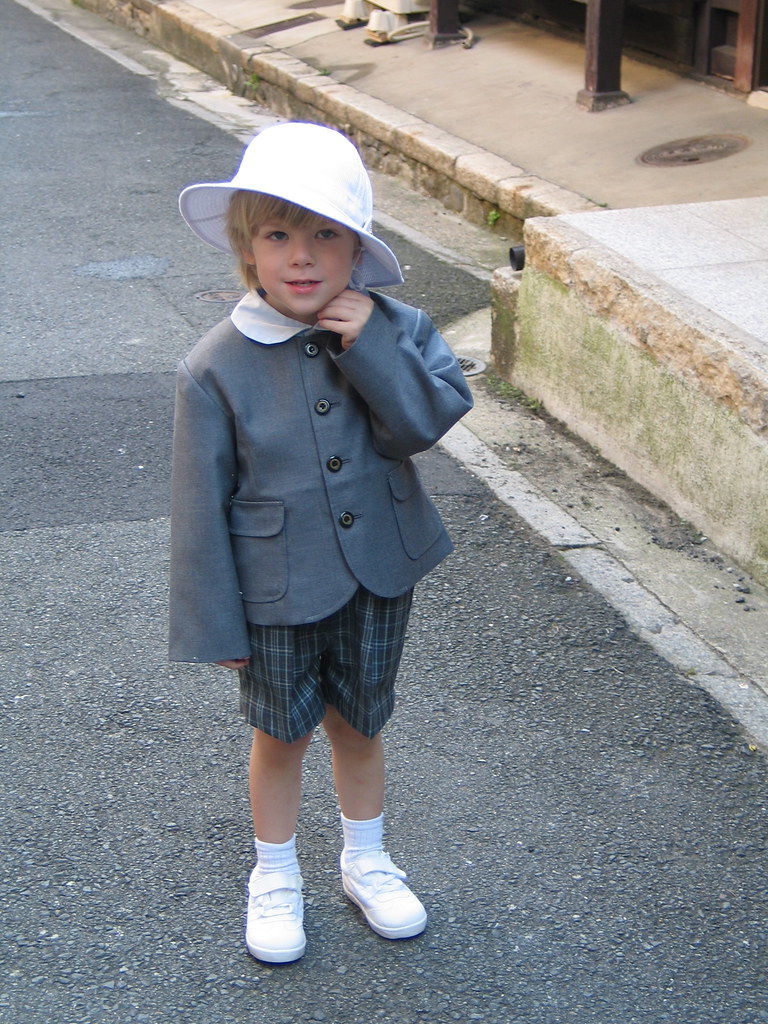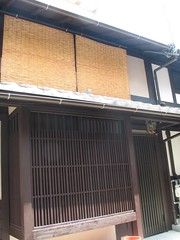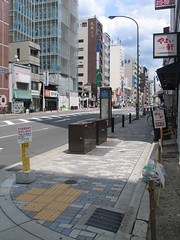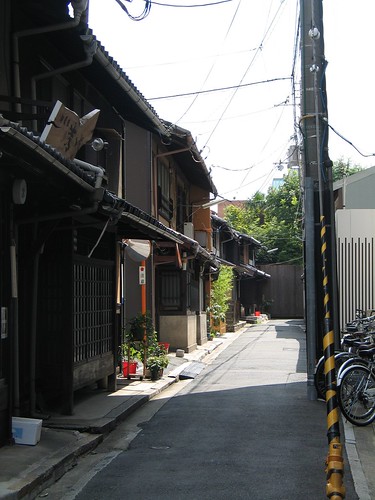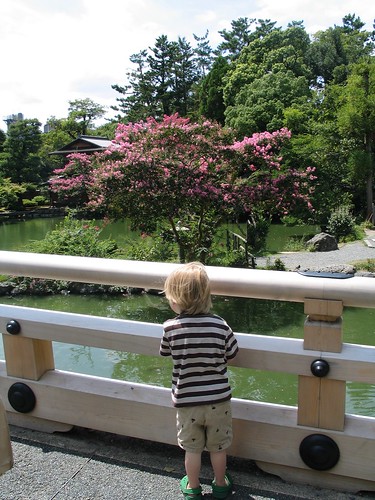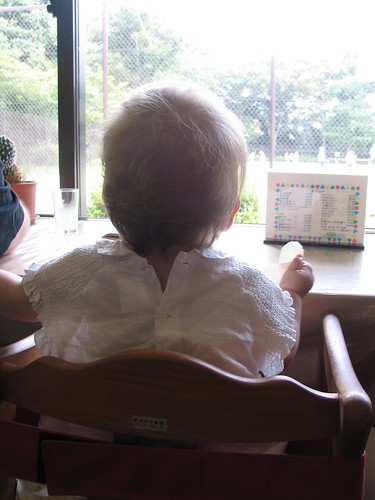On most days we do the commute to Sam's yochien by bus. We take a bus from our corner, ride it for about 10 minutes, and walk about five minutes on the other end. Of course with a wandering three year old on a busy street, especially in bright sun or pouring rain, the walking part can be interminable, but it is not bad in part because the buses run on schedule and are frequent. Most of his classmates live a bit closer and commute riding on their mothers' bicycles (in seats) - most children wear helmets, no parents wear helmets. About 10% seem to use cars. In my shoes, most of the mothers would use bikes, but those who grew up in this city have been biking for their whole lives on these narrow and busy streets and so are not quite as nervous about it as we have been. Several carry two children on the bike, with a seat installed front and back. I haven't installed even one seat yet though I did buy two children's helmet and brought my own from home.
By foot it is only about 20 minutes for an adult, so sometimes we use our double stroller and walk both ways, usually with at least one child catching a nap. Last Friday I did this and took some photos along the way. They give a sense of some of the things one sees on a random walk in Kyoto.
Here's Sam walking up the path to school...
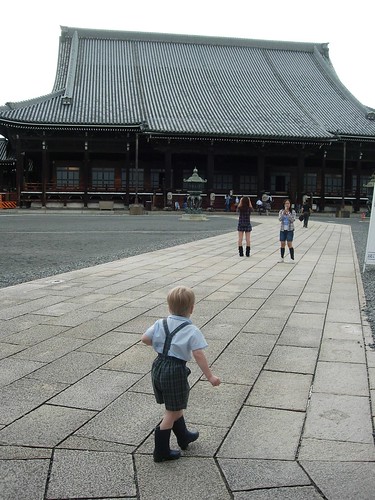
OK, his nursery school is not that imposing. This is really the center of the Honganji (Nishi Honganji) complex, the part where most of the tourists go. We made a bit of a pilgrimage on the way home. Sam wanted to go up inside and that would be fine, but there seemed to be rather somber praying going on in the hall, so I lured him back out and took a photo by the huge door. (He's just gotten a big haircut and so is a bit puzzled by being able to find his own ear.)
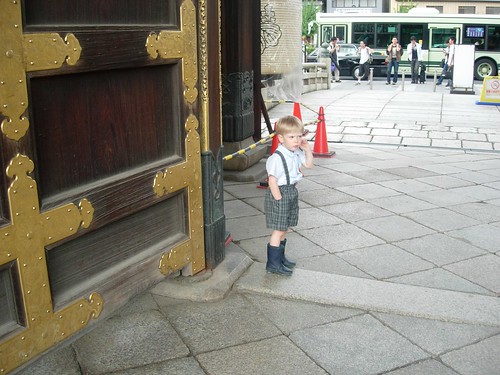
Heading out you can see the other side of Horikawa Street, most buildings on which are also connected to Honganji. Here are more modern buildings for the institution, including this large hall. The banners are about liberation from discrimination

Crossing into a smaller side street, we passed a place that manufactures o-mikoshi, or portable shrines used in Shinto festivals. This is not a museum - you can see boxes in back for shipping them off. I helped carry one of these in the mid-1990s at the Sanja Matsuri in Tokyo. It was only the smaller neighborhood shrine, but I ended up with some pretty impressive bruises and sore muscles.
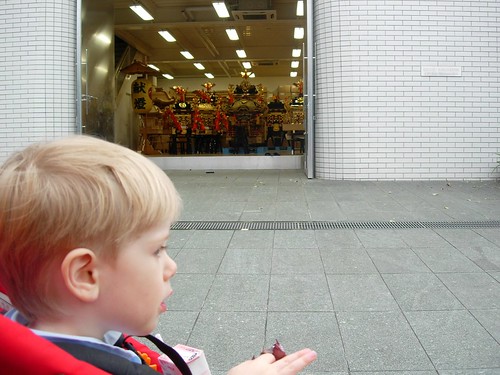
I never noticed it before, but Maia seems to have her own building on Nishinotoin Street. And it has nice pink lettering.
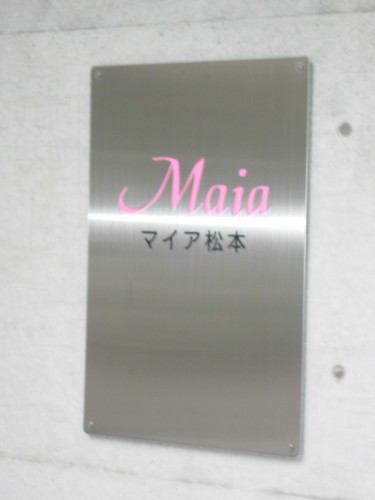
I turned into a smaller side street because I had read that there was a good eel shop. I thought maybe I would buy some prepared eel - this would make a quick dinner together with pickles and rice. But there was a huge crowd in front of the eel place, and they were filming something there. In this photo a car is blocking it, but the shop and the one next to it seemed to be dressed up to look extra quaint. I'll have to go back for eel some other time.

Nearby there is the Kandaijin Shrine. I never see much tourist traffic here - it is one of the many, many, many rather significant shrines that does not stand out in a city with so many such places. The plaque says that Sugawara no Michizane, a great Heian Period scholar, was first bathed in water from here, and so this spot was devoted to him and is turned to by aspiring students.
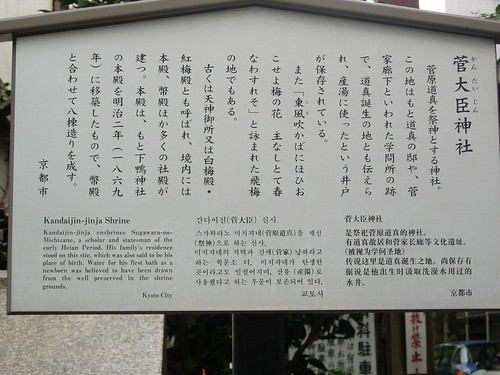
Here's a typical moderate older house plot in the area.
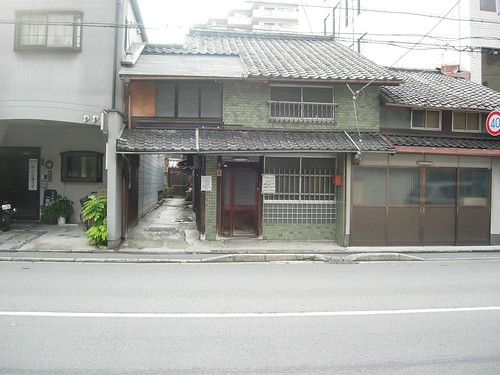
A restaurant with an interesting name and very old Toyota (I think) in front.
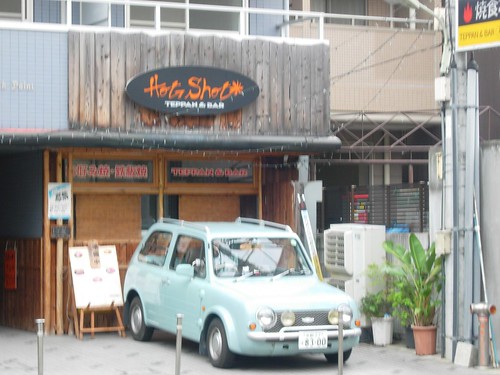
A great idea for a cafe - get a pet shampoo and have crepes and organic coffee. Or just sit with your dog while you have a coffee. They also advertise "Dog Aromatherapy" "Dog Reflexology" and "French Goods." What dog owner could ask for more?


Turning off the busy street, here's a sign for our alley
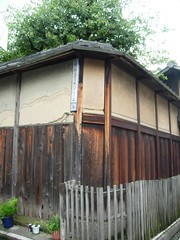
and a peaceful look at one leg of our Z-shaped street.
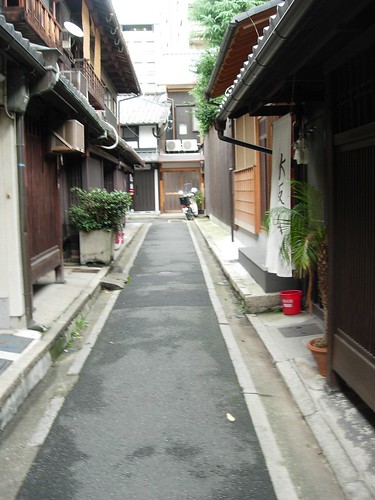
I wish I could do this every day, but usually I'm dashing back and forth from the other side of Kyoto on some crowded bus...

